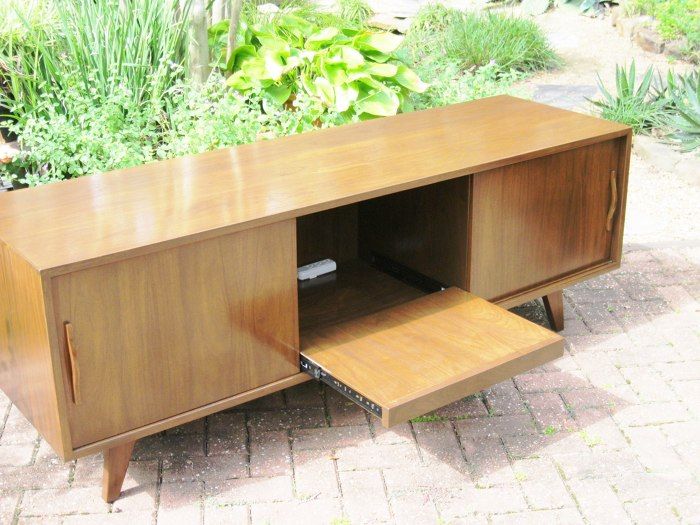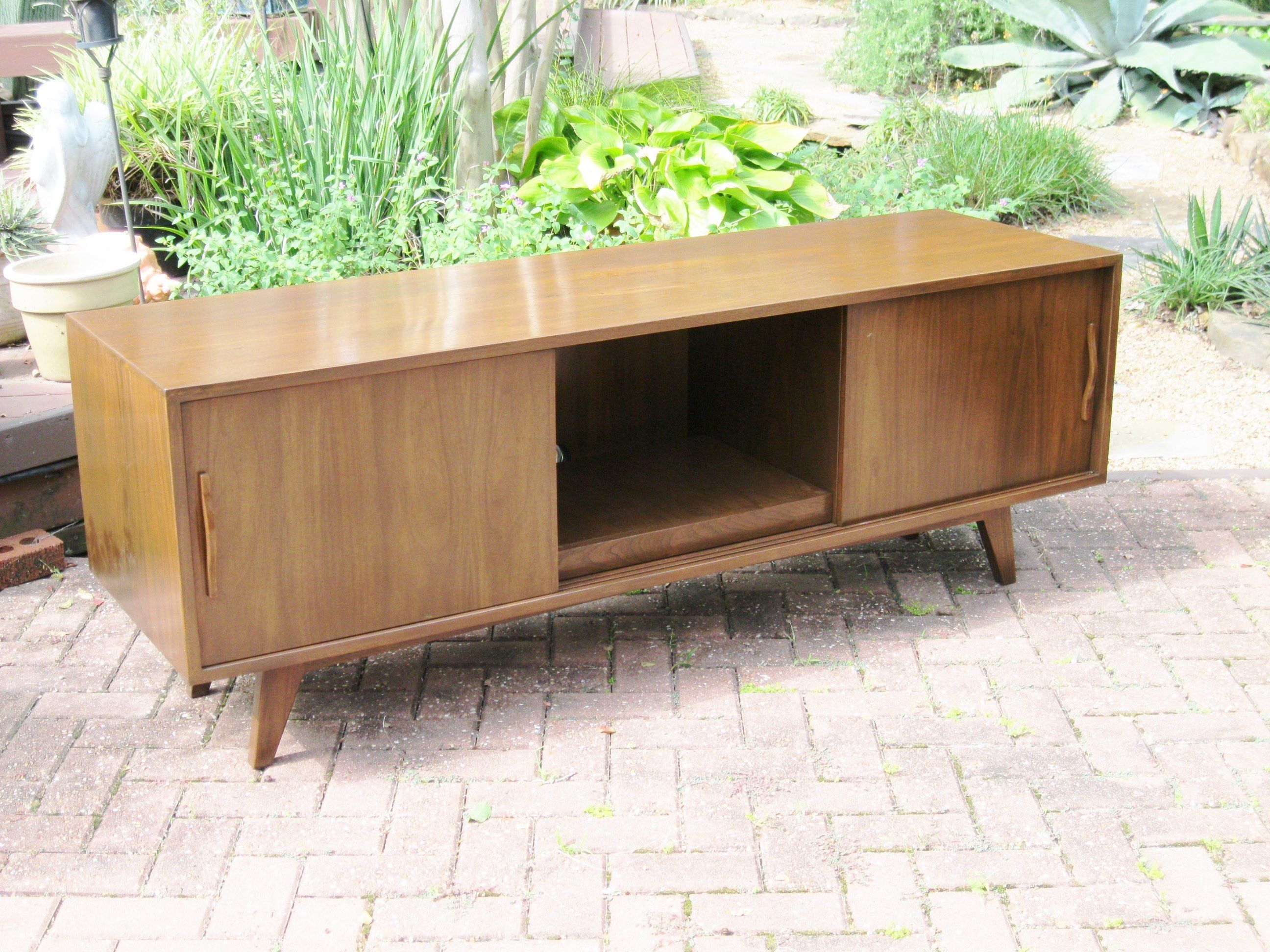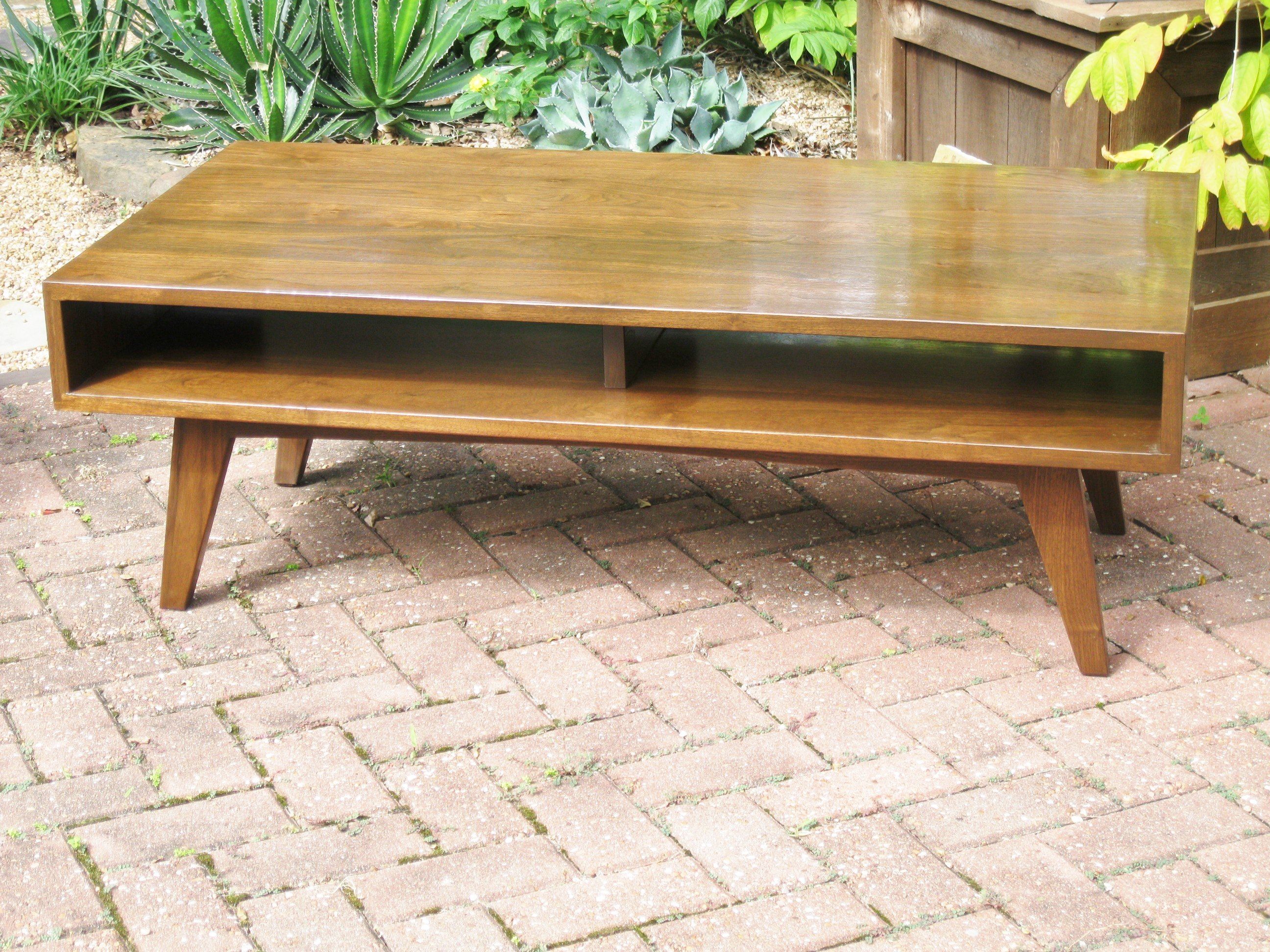50’s Fab

Roll-out electronics access.
A friend forwarded internet images of a TV console and companion coffee table he wanted in walnut for his “new” living room concept. These midcentury modern pieces may be straight forward designs but their clean lines with long free spans require considerable care in selection, layout, and preparation of lumber.
I was reluctant to consume my own supply of heart cut walnut milled 50 years ago by my father so my punishment was to sift through over 1000 bf from commercial sources, most of which had a high fraction of sapwood. (I have previously tried several recommended techniques of staining sapwood with disappointing results-the search continues.) After locating suitable heart stock, I staged the planing process over the course of a week to acclimate the finished pieces and correct warpage.
The carcass panels are joined with double rabbet corner joints and stopped dado dividers, which resulted in remarkably rigid construction. The 3/8″ thick bypass doors ride slightly above/below the mounting rails on concealed metal pins that slide smoothly in recessed troughs. Keeping the door panels themselves out of the troughs will prevent binding should the thin doors eventually warp. A rollout tray for easy access to the electronic components and adjustable side compartment display shelving complete the package.
I applied light walnut stainselectively to unify the multiple planks used in panel construction , a shellac sealcoat was applied to freeze the tones followed by multiple coats of semigloss poly leaving a partially open grain finish.





















Comments
Instead of looking for solid heartwood, you should have used veneered plywood. It is straight and sturdy and with solid edges attached looks great.
WoodNfish..thanks for your comment and indeed, I have used both commercially available and shop made veneered plywood for a number of pieces for the reasons you site. Nevertheless, I find walnut plywood typically employs narrow veneer strips of repetitive grain pattern giving large surfaces a "manufactured" appearance. Consequently, when practical, for walnut and certain other species, I continue to employ solid wood with random, natural grain patterns for visual appeal.
Log in or create an account to post a comment.
Sign up Log in